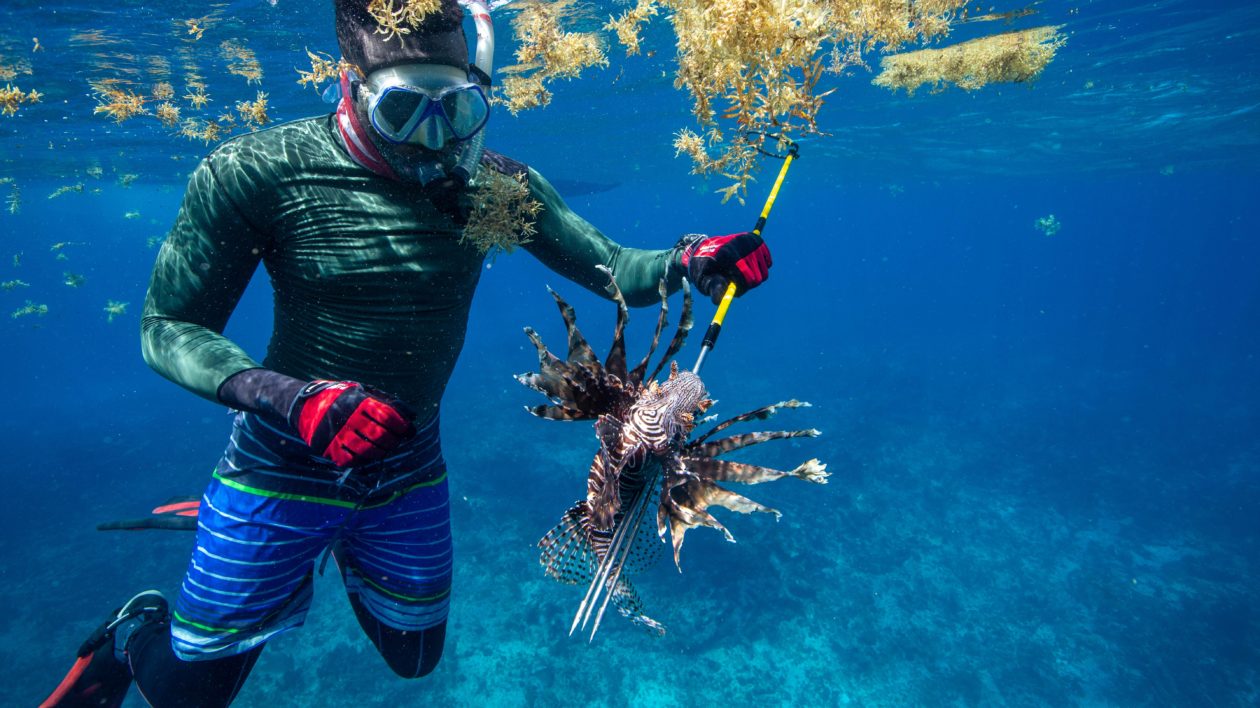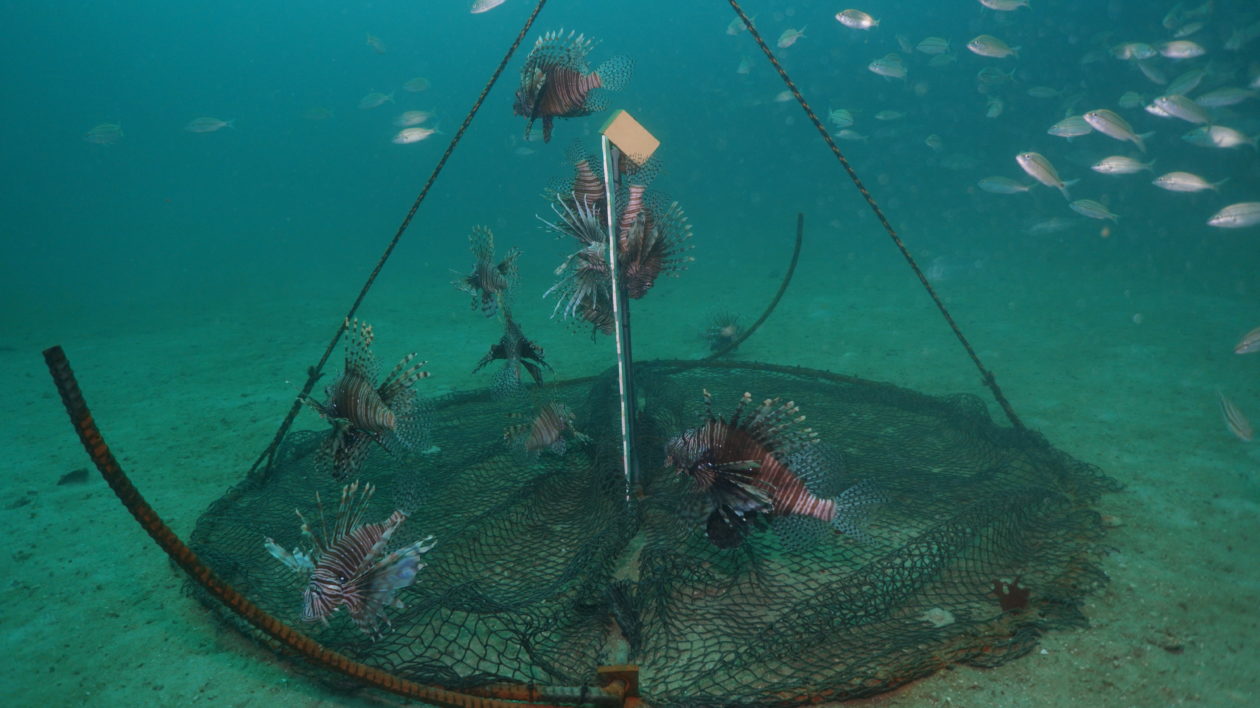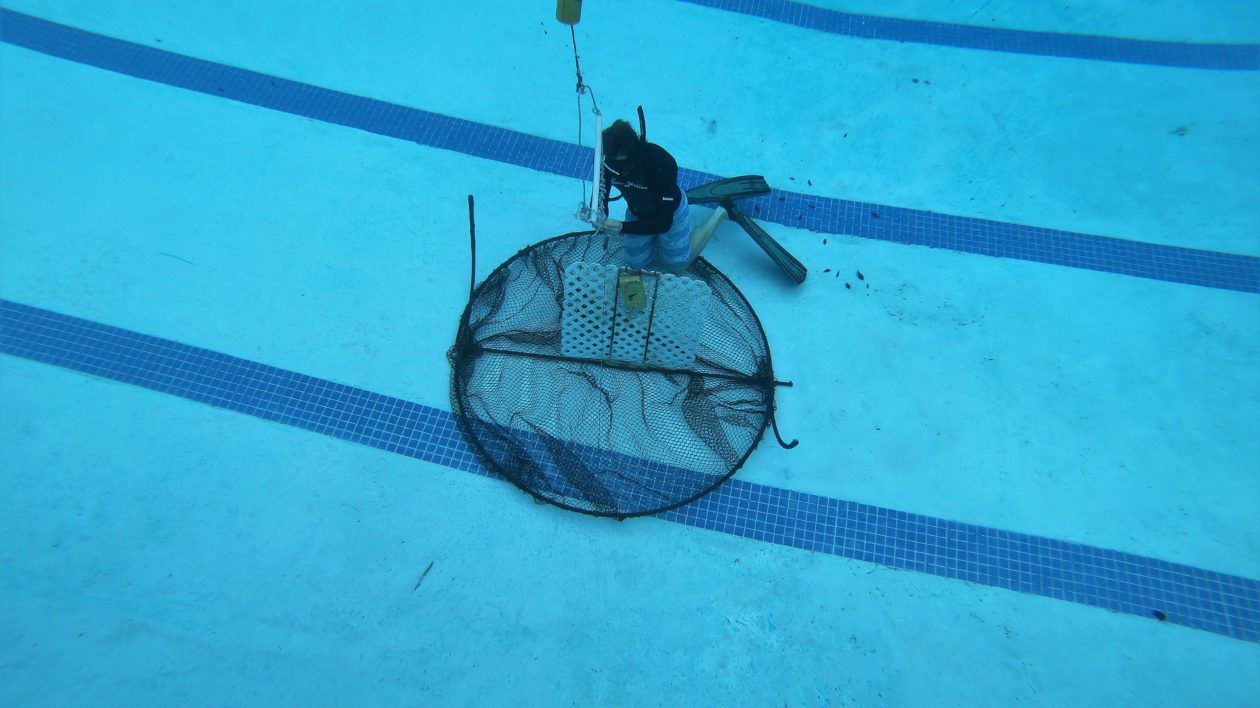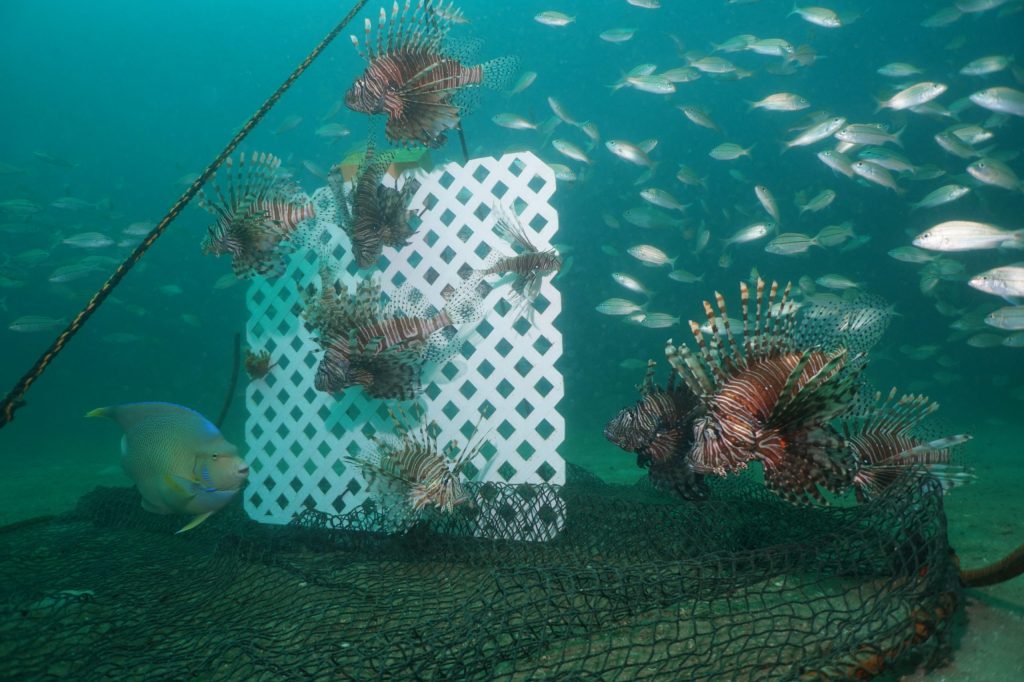The traditional pattern is a square or diamond weave. Vines wrap around it on your front porch and varmints try to get around it under your back deck. It’s lattice fencing and it’s nothing new to neighborhoods. But in the ocean? This is a first. Lionfish have no idea what they’re in for.
“From the start, we knew almost any structure would attract lionfish,” says Steve Gittings, NOAA National Marine Sanctuaries chief scientist. “They’re highly attracted to structure, more so than other fish. That’s to our advantage. With lionfish, it doesn’t matter if there’s bait. They’re attracted to structure. They come and they stay.”
Lionfish have become a significant invasive species in the Atlantic Ocean. They’re prolific feeders and breeders. Native to the South Pacific and Indian Oceans, lionfish eat more than 50 species of fish and a female releases about 2 million eggs annually.
According to NOAA, the first lionfish captured in the Atlantic Ocean was documented in 1985 near Florida, most likely an aquarium castoff. By 2009, lionfish were established along the Atlantic coast and spreading elsewhere. From North Carolina to South America, the striped predator with venomous spines and a voracious appetite eats native fish in substantial numbers.
Attracting, and trapping, a fish as invasive as lionfish requires intense effort. Many methods have been tried, but the lattice fencing offers a new way to target the fish in deep water.

The Purse Trap
Gittings is the mastermind behind the purse trap, which anyone (other than him) calls the Gittings trap. He prefers purse trap because the device looks like a coin purse with its two net halves clasped tightly together when snapped closed around lattice.
“I love seeing new ideas, but I’m skeptical they’ll ultimately work out. They have to be economically feasible for fishermen to use,” says Holden Harris, University of Florida postdoctoral research scientist. “For it to be widely implemented, you need to be able to build a lot of them and do it cheap. I saw what Steve built and knew it would meet that criteria.”
Harris studies ecosystem models at the university’s Nature Coast Biological Station. He performed underwater tests on the contraption built by Gittings. He released his findings in the journal PLOS ONE in August.
“It was incredible when we went back a few days later to check the trap. It did in fact work,” Harris says. “It doesn’t use any live bait, yet a fair amount of lionfish were there.”

Inspiration from Hallmark
Gittings designed the purse trap after studying pop-up Christmas cards, the kind that have a 3-D surprise that unfolds upright when you open the card.
He wanted the same effect, but in water. Drop a purse trap in the water and when it hits the ocean floor the net sides, attached to a frame of jaws, fall open as plastic lattice lifts vertically in the middle. Lionfish can’t seem to resist the lure of the lattice. When they’re snugged up to it, just pull the trap up. The net closes as the trap rises bringing admittedly beautiful lionfish with it.
“There’s no real magic to the lattice other than it’s easy to retrieve and replace if it breaks,” Gittings says. “If we’re really honest about this, almost anything works. I’ve seen bamboo in the center instead of lattice. Anybody could find materials on hand to attract live fish. Anything that floats off the bottom and creates structure attracts fish.”
While the lionfish invasion has garnered a lot of attention from media and conservation organizations, effective control remains a challenge.
“Control of lionfish in deep water isn’t happening right now,” Gittings says. “Sometimes other fish will eat lionfish, but not at a rate that has a conservation benefit and that’s what worries me. Lionfish reduce native populations significantly.”

Lionfish As Delicacy
Spearfishing works in shallow water, but lionfish live deeper. The purse trap deploys in depths beyond 150 feet. Any form of harvest helps also meet a current demand for lionfish as a delicacy. Whole Foods stores in Florida sell lionfish for $11.99 per pound. A whole lionfish weighs about two and half pounds. That’s more than $25 per fish.
“It’s a superb meat. It really is. I’m not kidding you at all,” Gittings says. “I wish it was more available than it is. There’s a big demand for it. If you can catch it, you can sell it. Hopefully traps will help supply catch up with demand.”
The next step is a two-year study with commercial lobster crews. They’ll test lattice-lined purses as single trap drops and lines of up to 30 traps in spring 2021. The hope is lobster crews can extend their fishing days by adding lionfish harvest when lobsters aren’t in season.
Gittings looks forward to time on the lobster boats where he’ll meet yet another group of people wanting lionfish to leave.
“It’s been so interesting to meet so many people who apply their skills to the phenomenon of lionfish. People are in business building spears and writing cookbooks while also trying to protect places they love,” Gittings says. “There’s a variety of things happening between new foods and the old hunting crowd. It’s been a life experience to blend science with fascinating people who are rallying around this lionfish problem.”




Does this sort of trap also catch other fish besides lionfish? Do the fish survive the trapping experience so that the other, native fish can be put back in the ocean? I know that many methods of fishing result in significant by-catch, so was wondering whether this method is perhaps better at separating out just the target species.
Very interesting and optimistic
Great idea, and will be very interesting to follow the study
I m writing to you from Dardanelles..i work distribution of Lionfish and their ectoparasitic species along Turkish coast line..in my surveys they are more and more coming from south to north of eastern mediterranean coast..last observating was realised in the Karaburun -Outer bay of Izmir.